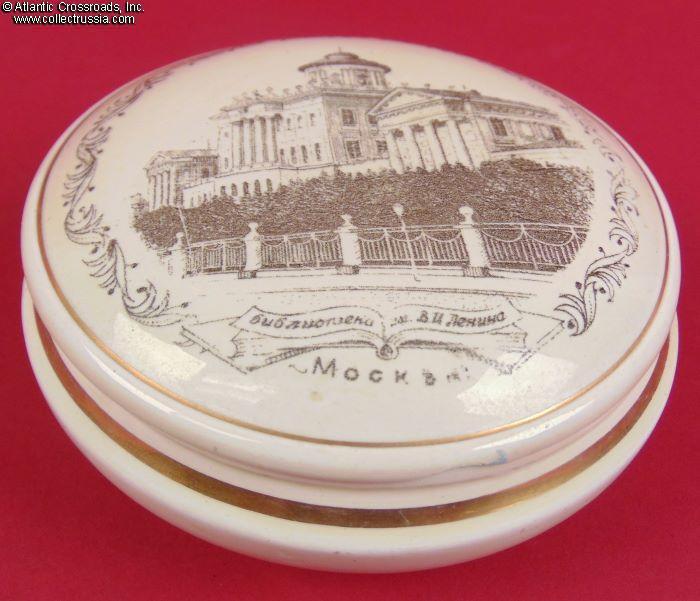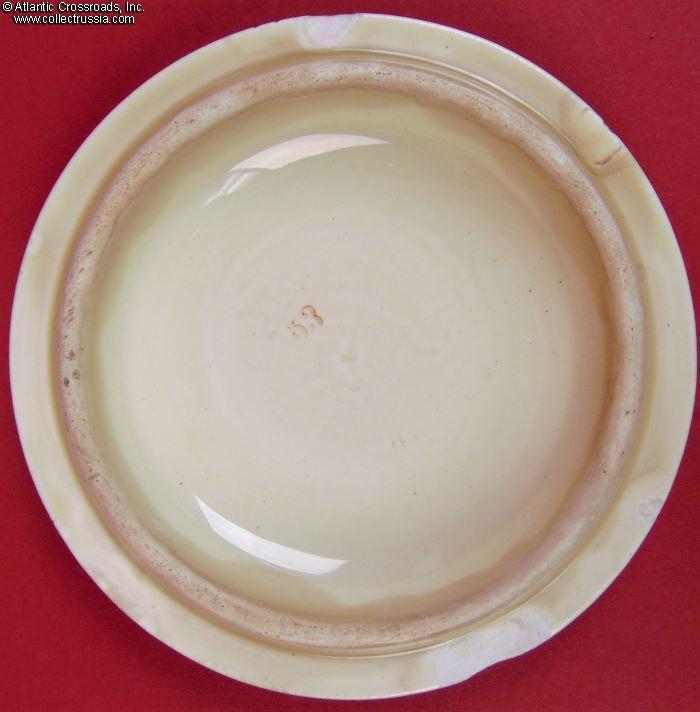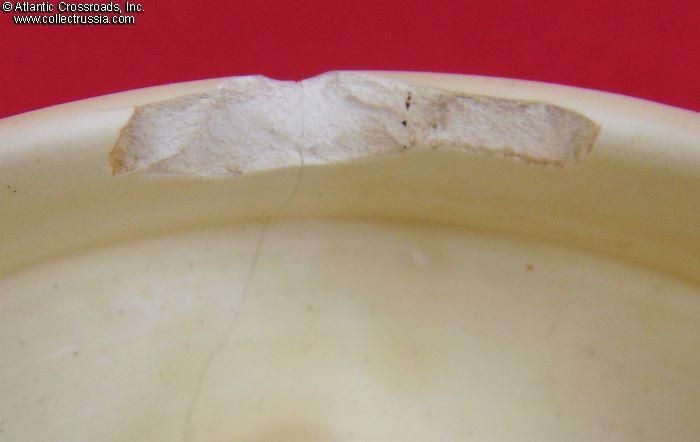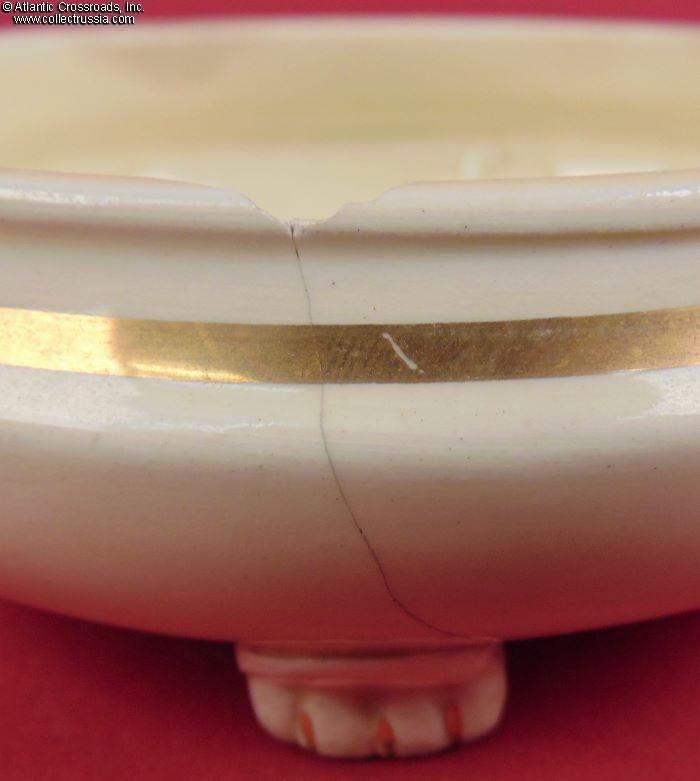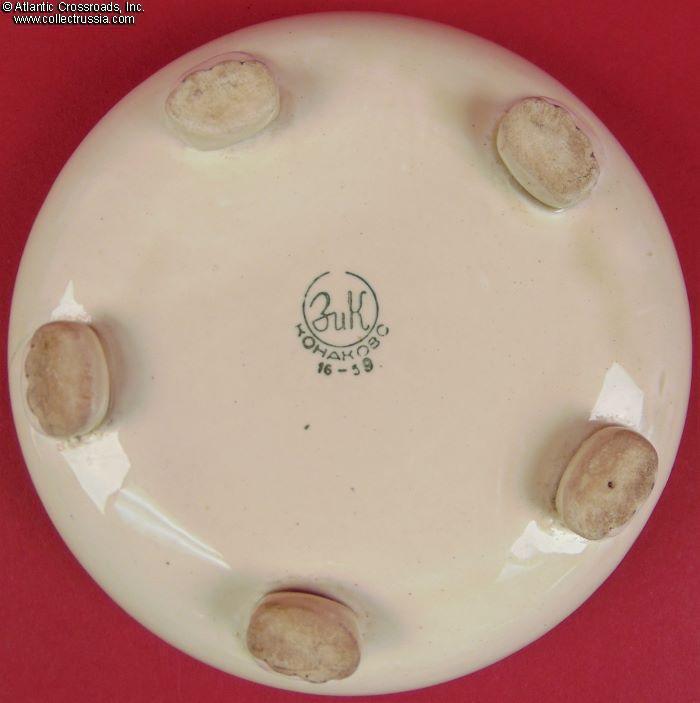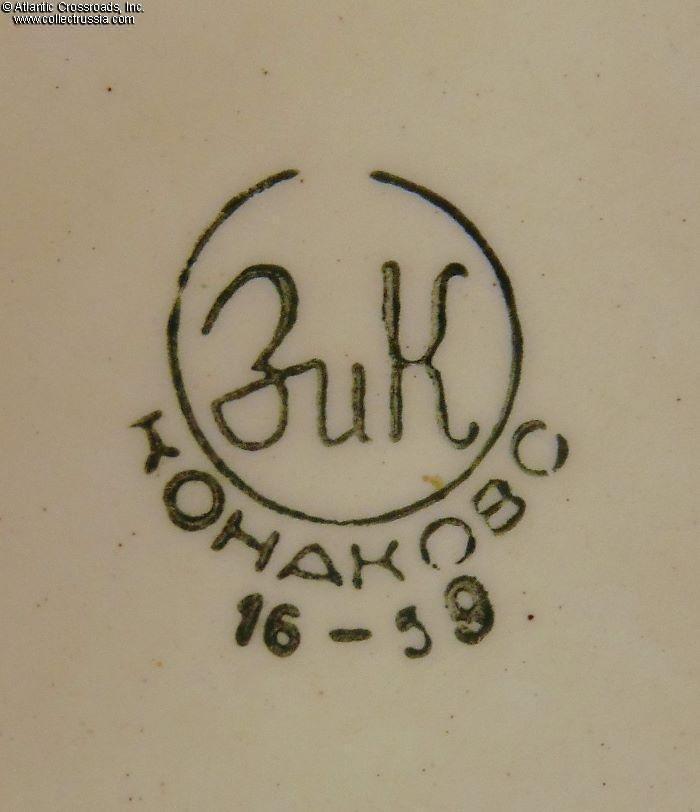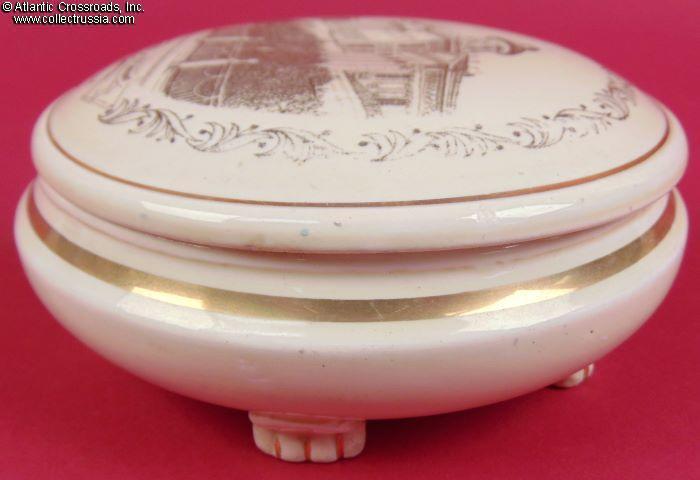
Round decorative keepsake box with Moscow Lenin's Library artwork on the lid, by Konakovo Faience Factory, dated 1959.
Measures a little over 6" wide. 2 ¼" tall with the lid on. The sepia photo artwork on the lid depicts a view of the V. Lenin State Library in Moscow as it looked in the 1950s. The inscription below the image reads, translated into English, "V.I. Lenin's Library, Moscow". Maker marked on the bottom. This version of the Konakovo Faience Factory trademark was in use from 1952 to 1959 (fig. # 364 in Volume One of Marks on Soviet Porcelain, Faience, and Majolica, 1917-1991 by Nasonova et al).
In fair to good condition. There are 3 chips to the faience on the bottom edge of the
Measures a little over 6" wide. 2 ¼" tall with the lid on. The sepia photo artwork on the lid depicts a view of the V. Lenin State Library in Moscow as it looked in the 1950s. The inscription below the image reads, translated into English, "V.I. Lenin's Library, Moscow". Maker marked on the bottom. This version of the Konakovo Faience Factory trademark was in use from 1952 to 1959 (fig. # 364 in Volume One of Marks on Soviet Porcelain, Faience, and Majolica, 1917-1991 by Nasonova et al).
In fair to good condition. There are 3 chips to the faience on the bottom edge of the lid as well as one chip on the body, mostly on the inside but partially visible on the outside. A hairline goes down from the chip reaching the bottom.
The State Lenin's Library in Moscow is the national library of the Russian Federation, the largest public library in Russia and one of the largest libraries in the world, claiming to be on par with the British Library in terms of the number of stored items and the volume of scientific research performed.
The Konakovo Faience Factory was founded in 1809 in the village of Kuznetsovo and prospered until the death of its founder, A. Auerbach. Auerbach's heirs were not as successful in running the business, and in 1870 the factory and all its debt were bought out by Matvey Kuznetsov who by then was in porcelain and faience business and very successful. Curiously, it was by pure coincidence that his last name was the same as the name of the village. When Bolsheviks came to power, the factory was nationalized and continued to grow, manufacturing a wide assortment of utilitarian, propagandistic, presentational and purely artistic items in faience and porcelain. The factory did not handle the economic changes of the post-Soviet period well. It went into bankruptcy and was closed in 2006.
Please note that the penny in our photo is for size reference.
$60.00 Add to cart

